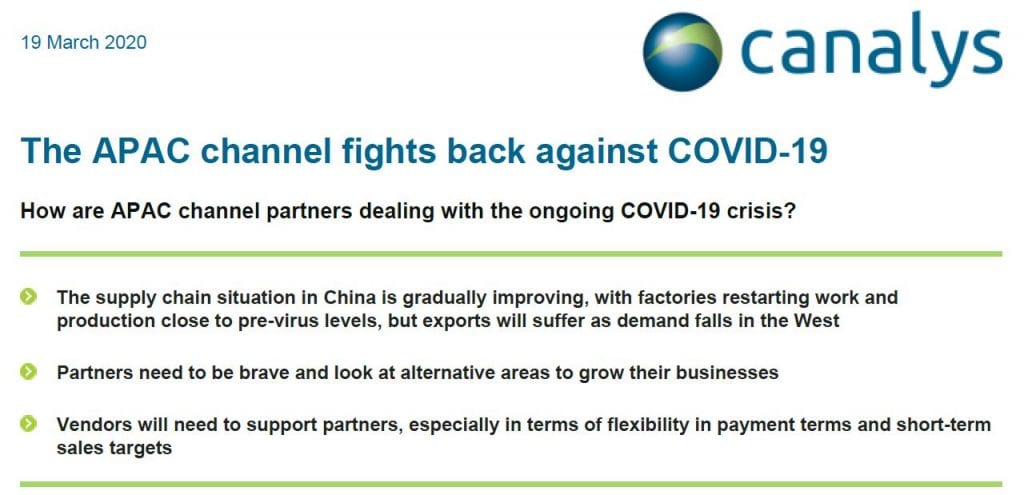REPORTS
The APAC channel fights back against COVID-19
How are APAC channel partners dealing with the ongoing COVID-19 crisis?
- The supply chain situation in China is gradually improving, with factories restarting work and production close to pre-virus levels, but exports will suffer as demand falls in the West
- Partners need to be brave and look at alternative areas to grow their businesses
- Vendors will need to support partners, especially in terms of flexibility in payment terms and short-term sales targets
COVID-19 has affected hundreds of thousands of people and is having a growing impact on the global economy. The S&P ratings remain optimistic, forecasting economic growth in APAC of 4.0% this year, against the 4.8% estimate given in December. Some markets are either managing the crisis well, or have passed the worst of it, while others are still in a cautious phase.
China could see growth of 2.8%, down from the projected 4.8% earlier. But the number of confirmed cases in China has been falling since the beginning of March, bringing the hope of a return to normality for businesses in China. But they will now face export challenges as the epicenter of the COVID-19 outbreak has moved to Europe and the United States, and demand for products over the next three to six months will fall. South Korea, Taiwan and Hong Kong have also done a good job in containing and managing the spread of COVID-19 due to the rapid control measures and response by their governments and societies. Japan remains optimistic that the summer Olympics can still go ahead.
In Southeast Asia, the Malaysian government announced a two-week nationwide movement restriction to curb the spread of COVID-19. Businesses must shut down except for markets and shops that sell daily necessities. This is after there was a sudden spike in confirmed cases, bringing the total to 553, the highest of any Southeast Asian country as of 16 March 2020. This will have ramifications for neighboring Singapore, which relies on Malaysia to supply about 10% of its workforce. Singapore too has had a recent surge in COVID-19 cases, which shows that the virus is still active in the region and may continue to disrupt society and the economy in the near future. The Philippines has also closed access to the capital Manila, advising its citizens to stay at home in self-imposed quarantine, which government officials hope will curb the nation’s rising number of coronavirus cases, which has reached 187.
In India, the number of positive cases has risen to 169 and 3 deaths. The infection rate remains low relative to India’s population and credit has to be given to the government for its quarantine measures and visa suspensions for countries such as France, Spain and Germany, as well as China, Italy, Iran, Japan and South Korea – the five countries worst hit by the outbreak. Confirmed cases in Australia stand at 539 and the government has restricted indoor gatherings to 100 people, in addition to the ban on gatherings of over 500 people outdoors. The government has also advised Australians not to travel overseas. In New Zealand, there have been 20 confirmed cases and the government has implemented strict border controls as well as banned big public gatherings to control the spread of the virus.
SHARE:







